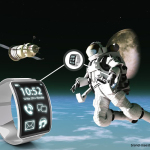5 Vital Rules of Amazing Mobile Interface Design
Do you know that as per the predictions of tech gurus, mobile phones will soon replace desktops as the prime platform to access the web world? This small device is constantly evolving. Mobile interface design is being constantly advanced by the designers to improve user experience. Designers are coming up with new ideas to engage readers with an eye-catching and user-friendly interface design on mobile phones. As a mobile application designer, if you are applying your creative instinct to increase the appeal of an app’s interface design, it is absolutely fine, but you have to make sure that you bear in mind the following five rules of striking mobile interface design.
Five fundamental rules for captivating mobile interface design:
1. Make a mobile-centric approach :-
There are a whole lot of differences between mobile and desktop and you have to be aware of them in order to make the mobile interface design engaging.
- Less but significant content – For instance, you cannot stress on adding more and more features on a mobile app. You need to edit wisely regarding which features are most important to keep and which ones are better to leave.
- Uniqueness – Then, being a mobile application designer, you need to prick your wisdom to find out what is exclusive about your app. There are so many gaming apps in the market, but what makes your app the best pick? On the other hand, unless and until you offer something incredible and remarkable in your product, will your users show interest in trying it out? Certainly not, so work hard to make your app more enjoyable and interesting.
- Expectations of users – In addition to the above-mentioned points, you also need to think from a user’s point of view in order to understand what is it actually audiences expect from your app, how can the application be useful to them and what you need to do for fulfilling their requirements as a mobile application designer.
2. Consider the diverse trends and approaches :-
Not every application calls for the same approach and embraces the same trend and design. Whether you are creating an app for Apple or Android smartphones, you have to ensure that it adheres to some crucial guidelines mentioned below.
- Prompt reaction to action – This is very important and in no way you can overlook it, otherwise your app is of no use. Whenever a user performs an action on the application, the app must react to that right away. The functionality of an app is gauged critically on the basis of its responsiveness. Responding to the user’s actions at quick pace is important. Even if any operation takes time, you should make the users know that the response will be there very soon.
- Easy interaction with the content – The most striking advantage of the touch interfaces of smartphones is that they help users to interact with the content directly. The less use of tab bars, sliders, check boxes and buttons aids in bringing the content at the centre.
3. Offer a seamless navigation :-
Navigation is the biggest thing about a mobile interface design. A mobile application designer has the option to choose from a number of unique navigation patterns for different mobile apps. You need to select the one that best compliments your app.

4. Provide impeccable user input features :-
Make typing easier for users and for that you need to scrutinies each user input areas on your application and then, select the right keyboard for easy data entry. Do not overlook the auto-entry options like, auto-correction, auto-completion and auto-capitalization. In case your application requires a great deal of typing, the landscape orientation needs a lot of attention and evaluation.
5. Ensure proper communication :-
A mobile user interface is not at all functional if you ignore the following two factors.
- Respond properly – This point bears a semblance to one discussed earlier (prompt reaction to action). For every user interaction, there should be a feedback or else, the user will think that the app has stopped working. Users may also deem that they have made a wrong search. The response to the user’s action can be tactile or visual. The thump vibration is an example of a tactile feedback while underlining a tapped button is an instance of a visual response. Animations can also be used to let users know that their queries have been received and the answer will be displayed shortly.
- Verify user actions – In addition to the above-mentioned point, you must pay heed to extract a confident answer when a user is required to verify an action on the application. Users may perform a wrong action unknowingly for example; they may delete bookmarked pages or pages that are listed as favorites. So, to help users avoid such actions, you may show a confirmation dialogue like, “Are you sure you want to delete these pages?”
An attractive mobile interface design = A winning mobile app
Remember this formula and consider the five rules and work hard to create a great mobile interface design. Here’s wishing you luck for a successful career as a mobile application designer.












Leave a Reply